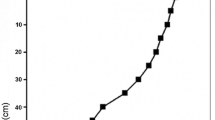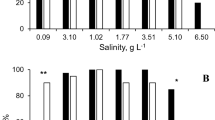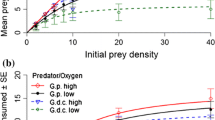Abstract
The coexistence of Daphnia cucullata × galeata hybrids with the parental species D. galeata and D. cucullata was investigated by measuring areas and mesh sizes of filtering structures of these herbivorous zooplankton taxa cultivated at low and high food concentrations. The clearance rates and somatic growth rates were also determined. When reared at low food concentration, all taxa had larger filtering areas. Larger filtering areas also resulted in higher clearance rates. Differences between taxa in both filtering area and clearance rate were caused mainly by interspecific size differences. Hybrids had the largest absolute mesh sizes, and the parental species had smaller mesh sizes. Hybrids also showed heterosis in somatic growth rate at high food concentration. The observed taxon-specific differences in mesh size and somatic growth rate contribute to resource partitioning between the taxa and thus to their successful coexistence in lakes.
Similar content being viewed by others
Author information
Authors and Affiliations
Additional information
Received: 1 March 1999 / Accepted: 25 May 1999
Rights and permissions
About this article
Cite this article
Repka, S., Veselá, S., Weber, A. et al. Plasticity in filtering screens of Daphnia cucullata×galeata hybrids and parental species at two food concentrations. Oecologia 120, 485–491 (1999). https://doi.org/10.1007/s004420050881
Issue Date:
DOI: https://doi.org/10.1007/s004420050881




